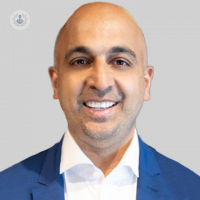Smile transformation: A deep dive into Invisalign
Autore:In his latest online article, Dr Sheraz Aleem gives us an insight into Invisalign. He talks about if Invisalign is superior to braces, if it’s painful, if adults and children can benefit from Invisalign, how long treatment takes, if you can transition from Invisalign to traditional braces and how to keep them clean.

Is Invisalign superior to traditional braces?
The comparison between Invisalign and traditional braces hinges on several factors, rendering it a subjective matter. The choice between the two depends on individual circumstances, such as the specific dental issues and desired outcomes. Invisalign employs a distinct approach for teeth realignment when compared to traditional braces. Generally, Invisalign is often recommended for cases not requiring tooth extractions, while braces are preferable for those that do. Nevertheless, there are instances where Invisalign can be used alongside extraction cases. Personally, I lean towards Invisalign for non-extraction cases.
Is Invisalign painful?
In brief, Invisalign typically does not induce significant pain. Initially, wearing Invisalign aligners may cause minor discomfort. However, this discomfort rarely escalates to the level of pain experienced with traditional braces, particularly during the initial week or so. The degree of discomfort varies from person to person, depending on their pain tolerance. It's worth noting that this initial discomfort stems from the applied pressure on the teeth, a sign that the treatment is progressing. Whether you opt for Invisalign or braces, some level of discomfort is expected, but pain is more commonly associated with fixed braces. Unlike Invisalign, braces cannot be removed by the patient, which can offer some relief. In my extensive experience with both Invisalign and braces for both children and adults, I have not encountered cases where patients discontinued treatment solely due to initial discomfort.
Can both adults and children benefit from Invisalign?
Absolutely, both adults and children can undergo Invisalign treatment. However, there may be compliance issues with younger patients when it comes to Invisalign. The ability to remove Invisalign aligners can sometimes lead to children not wearing them for the recommended duration, potentially extending the treatment timeline. In such cases, fixed braces, which cannot be removed, may be a more suitable option from a compliance perspective. Nonetheless, the choice depends on the specific case. I've observed an increase in compliance among teenagers post-covid, particularly those attending boarding schools with longer intervals between appointments. Effective communication with patients, along with the support of a well-trained treatment coordinator, can play a pivotal role in ensuring compliance.
How long does Invisalign treatment take?
The duration of Invisalign treatment varies widely based on factors such as the complexity of the case, the type of malocclusion, and desired results. On average, treatment lasts from 4 to 6 months, with more complex cases requiring no more than one year. However, most cases are completed relatively quickly. Compliance plays a significant role, as patients must follow instructions to ensure timely progress.
Is it possible to transition from braces to Invisalign?
Yes, transitioning from braces to Invisalign is indeed possible and can be advantageous in certain cases. For instance, I may initiate treatment with braces when a tooth is severely mispositioned, as braces can provide faster movement. Once the desired correction is achieved, if suitable and preferred by the patient, we can switch to clear Invisalign aligners. This combination approach can yield excellent results, particularly for patients who prefer the aesthetics of clear aligners or seek a quicker outcome. It's important to note that traditional braces can often produce faster results than Invisalign, especially for complex cases.
How to maintain clean Invisalign aligners
Cleaning Invisalign aligners is a straightforward process. Patients receive comprehensive guidance from their treatment coordinator, and Invisalign packages include cleaning crystals that dissolve in water. Simply place the aligners and the cleaning tablet in a clean cup, allowing them to soak in the mixture. Within minutes, the aligners are clean. Of course, the extent of cleaning required depends on how dirty the aligners were to begin with. Gently rinsing the aligners with lukewarm water and a soft toothbrush is also effective. Additionally, maintaining good oral hygiene and avoiding anything except water while wearing the aligners ensures cleaner aligners. Cleaning Invisalign aligners has proven to be hassle-free for my patients, as aligners are changed every 7-10 days, providing a fresh and clean set regularly. In contrast, cleaning fixed braces can be more cumbersome due to their attachment to the teeth, requiring extra time and attention.
Choosing between Invisalign and braces
The best choice between Invisalign and braces can only be determined through a comprehensive consultation. Our consultations involve a thorough assessment of the teeth and gums. As a treating dentist, it's crucial for me to spend ample time with patients to understand their concerns, goals, and engage in meaningful discussions. This allows me to provide informed recommendations and present the best available options. It's worth noting that Invisalign is particularly advantageous if you already have veneers or crowns, as fixed braces can pose challenges and potentially damage ceramic surfaces due to their attachment to the teeth.
Dr Sheraz Aleem is an esteemed cosmetic dentist with over 20 years of experience. You can schedule an appointment with Dr Aleem on his Top Doctors profile.


